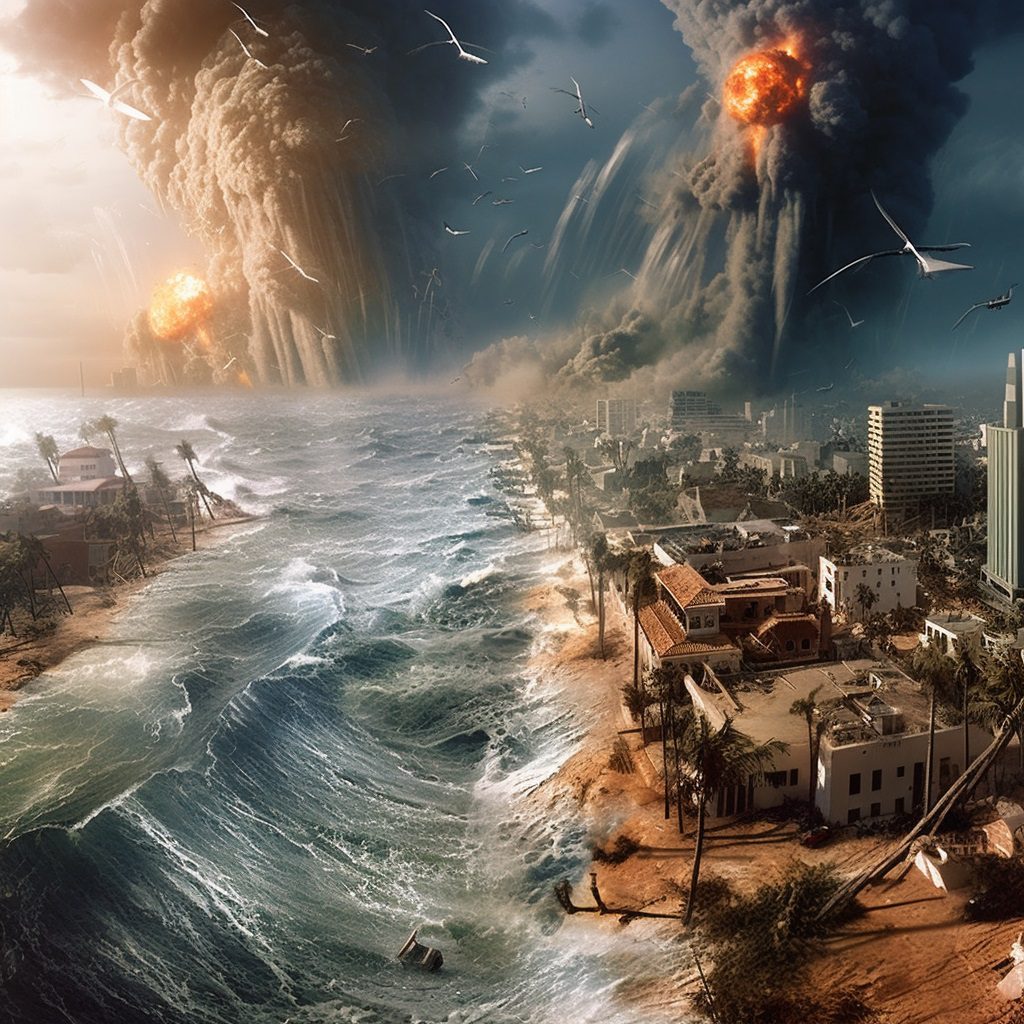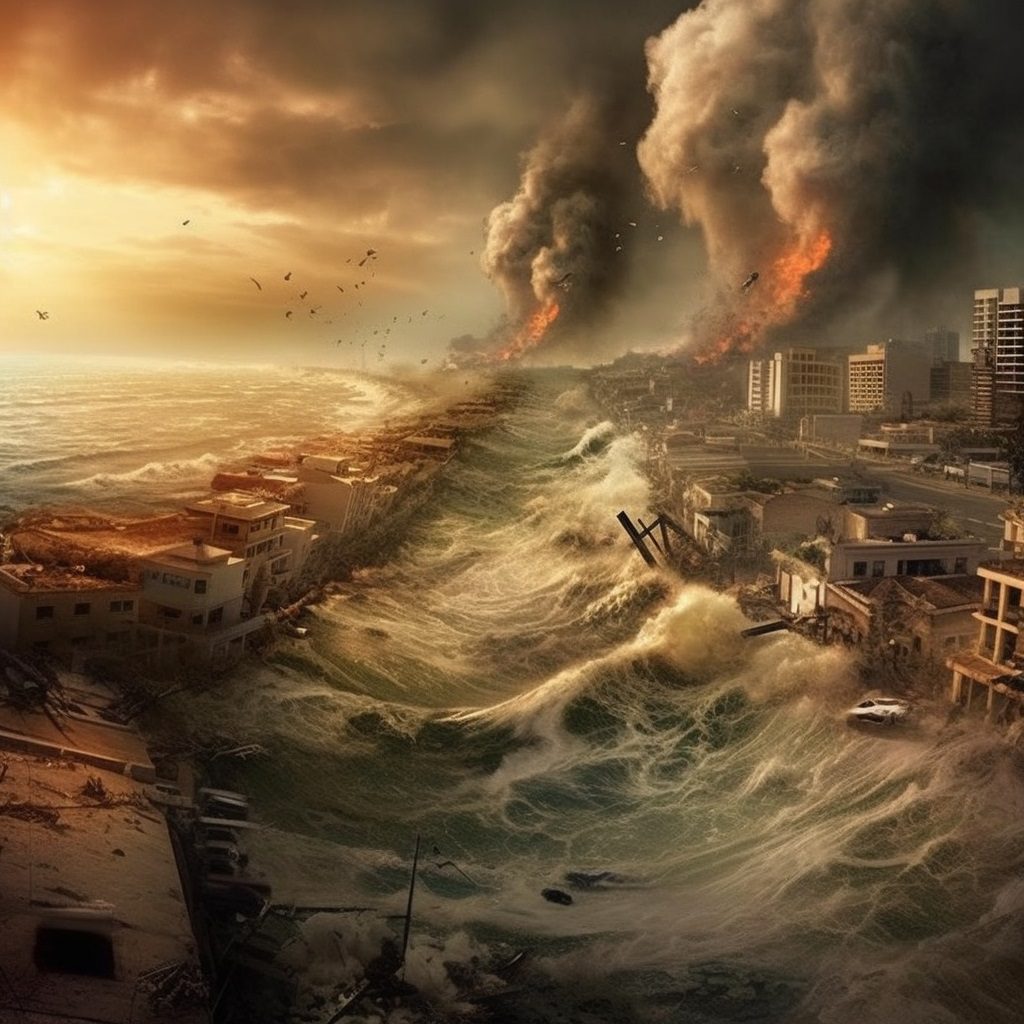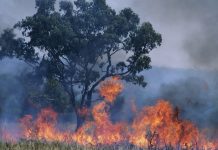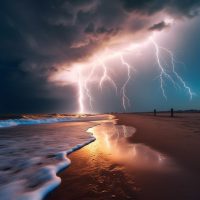
The awe-inspiring power of dramatic natural disaster footage serves as a stark reminder of the vulnerability humans face in the midst of Earth’s unpredictable forces. These incredible recordings not only capture our attention but also provide valuable insights into the impacts and consequences of such events.
This blog post will explore 10 of the most dramatic natural disaster footage ever captured on film. From twisters to tidal waves, these occurrences have had an enduring effect on both mankind’s story and our comprehension of nature’s fierceness.
Furthermore, we will delve into the far-reaching effects that these disasters have had on economies, infrastructure, and lives lost. Lastly, we will examine how technology has played a crucial role in capturing these moments for study and analysis through social media platforms and advanced recording techniques.
10 Most Dramatic Natural Disaster Footage
In the world of nature, there are times when Mother Nature unleashes her fury in ways that leave us awestruck and humbled. These top 10 most dramatic natural disaster footage showcase the power and devastation that can be wrought by such events. From tornadoes to tsunamis, these disasters have left lasting impacts on people’s lives and memories.
Miami F1 Tornado (1997)
The Miami F1 Tornado tore through downtown Miami on February 2nd, 1997, causing extensive damage to buildings and infrastructure. The powerful twister was captured on film as it ripped through the city streets with winds reaching up to 112 mph.
Chamosson Mudslide in Switzerland (2018)
In August 2018, a massive mudslide engulfed parts of Chamosson village in Switzerland after heavy rainfall caused a riverbed overflow. The dramatic footage shows cars being swept away by torrents of mud while homes are buried beneath debris.
Mount Ontake Eruption in Japan (2014)
Mount Ontake erupted unexpectedly on September 27th, 2014, while hikers were enjoying a beautiful autumn day at its summit. The eruption sent ash plumes soaring into the sky which quickly turned deadly for those caught off guard. The harrowing footage captured by hikers shows the terrifying moments as they tried to escape the ash cloud.
San Francisco Earthquake (1989)
The 1989 San Francisco Earthquake was a devastating event that resulted in significant destruction and fatalities, with many of the moments captured on video during the World Series baseball game at Candlestick Park. It caused widespread damage and loss of life, with much of it caught on camera during live broadcasts of a World Series baseball game taking place at Candlestick Park.
Chelyabinsk Meteor in Russia (2013)
In Feb of ’13, a meteoroid detonated in the Chelyabinsk region with an approximated magnitude akin to 500 kilotons of TNT. The event was captured by numerous dashcams and mobile phones, providing valuable data for researchers. The shockwave from the explosion shattered windows and injured over a thousand people.
Indian Ocean Tsunami (2004)
The deadliest tsunami in recorded history occurred on December 26th, 2004, after an undersea earthquake triggered massive waves across several countries bordering the Indian Ocean. With countless videos capturing its devastation, this disaster claimed more than 230,000 lives.
California Wildfires – Skirball Fire & Others (2017)
In December 2017, the Golden State was hit with some of its most destructive wildfires ever seen. The Skirball Fire was one such blaze that burned through Los Angeles, destroying homes and forcing thousands to evacuate. Dramatic footage captured the fire’s rapid spread as it consumed everything in its path.
Nepal Gorkha Earthquake & Everest Avalanche (2015)
The 7.8 magnitude earthquake that struck Nepal on April 25th, 2015, triggered a massive avalanche on Mount Everest, which claimed the lives of at least 19 climbers. Footage from base camp showed the terrifying moments when snow and ice engulfed those caught in its path.
Mount St. Helens Eruption in Washington State (1980)
The eruption of Mount St. Helens on May 18th, 1980, remains one of the most well-documented volcanic events ever recorded, thanks to numerous photographers who risked their lives capturing this historic event up close. The powerful blast flattened forests for miles around and sent ash plumes over ten miles high into the atmosphere.
Tohoku Tsunami In Northeast Japan (2011)
On March 11th, 2011, a catastrophic tsunami struck northeastern Japan following a massive undersea earthquake off its coast. Entire towns were wiped off maps while countless videos documented heart-wrenching scenes as people tried desperately to escape or find loved ones amid chaos and destruction.
The 10 Most Dramatic Natural Disaster Footage is a testament to the power of nature and its ability to cause catastrophic destruction. It’s important to understand not only the physical damage caused by these disasters but also their economic and psychological impacts as well.
Key Takeaway:
This section showcases the top 10 most dramatic natural disaster footage, ranging from tornadoes to tsunamis. The footage captures the power and devastation of these events, leaving lasting impacts on people’s lives and memories. From the Chamosson Mudslide in Switzerland to the Tohoku Tsunami in Northeast Japan, Mother Nature unleashes her fury in ways that leave us awestruck and humbled.
The Impact of Natural Disasters
While some natural disasters occur with little warning or predictability, their effects can be felt for years after the event has passed. In this section, we will explore how these catastrophes affect communities, infrastructure, economies, and ecosystems while highlighting recovery efforts made by affected regions.
Economic Consequences
Natural disasters often leave a trail of economic devastation in their wake. The destruction caused by events such as the 1989 San Francisco Earthquake and the 2011 Tohoku Tsunami in Japan resulted in billions of dollars worth of damage to property and infrastructure.
These costs are not only borne by those directly impacted but also ripple through local and global economies as businesses struggle to recover from lost revenue or increased expenses due to rebuilding efforts.
Destruction of Homes and Infrastructure
Beyond the financial toll that natural disasters take on communities, they also cause immense physical damage. Buildings collapse under the force of earthquakes or are engulfed by wildfires like California’s Skirball Fire in 2017.
Roads become impassable due to landslides triggered by heavy rainfall or mudslides like Chamoson Mudslide in Switzerland (2018), leaving residents stranded without access to essential services or supplies. Homes and infrastructure being destroyed can lead to homelessness, resulting in people having to stay in makeshift shelters or experiencing long-term displacement.
Loss of Life and Long-term Psychological Effects
The most tragic consequence of natural disasters is the loss of human life. Thousands perished in events such as the 2004 Indian Ocean Tsunami and the 2015 Nepal Gorkha Earthquake & Everest Avalanche.
In addition to the immediate fatalities, many survivors face lasting psychological trauma from witnessing these horrific events firsthand. Post-traumatic stress disorder (PTSD) is a prevalent mental health issue among those affected by natural disasters and can cause long-term psychological distress.
Beyond PTSD, other mental health issues may arise following a disaster. Anxiety disorders, depression, substance abuse problems, and even suicidal thoughts are not uncommon among survivors struggling with grief over lost loved ones or grappling with their new reality in the aftermath of catastrophe.
Environmental Impact
Natural disasters also wreak havoc on ecosystems and wildlife populations. Events like volcanic eruptions such as Mount St Helens Eruption in Washington State (1980) release toxic gases into the atmosphere, which can cause acid rain that damages forests and waterways while contaminating the soil with harmful chemicals.
Additionally, wildfires destroy habitats for countless species – some endangered – making it difficult for them to recover their numbers once conditions stabilize.
On the other hand, natural disasters can also create opportunities for ecological renewal. For example, after a forest fire, new growth may sprout from the ashes as nutrients are returned to the soil and sunlight reaches previously shaded areas. In some cases, these events can even help maintain biodiversity by preventing any one species from dominating an ecosystem.
Recovery Efforts
In the face of such devastation, communities come together to rebuild and recover. Governments allocate funds for disaster relief, while organizations like the Red Cross provide emergency aid in terms of food, water, shelter, and medical care. Volunteers often travel great distances to assist with cleanup efforts or offer support services such as counseling or childcare.
While it is impossible to prevent all-natural disasters entirely – they are part of Earth’s dynamic processes – we can learn valuable lessons about preparedness and resilience that will better equip us for future challenges posed by Mother Nature’s fury.
The aftermath of natural calamities can be catastrophic, leading to a variety of negative repercussions, from financial losses to the obliteration of housing and other public works. Technology has enabled us to capture the effects of these events through social media posts and recorded footage, allowing us to better understand disaster patterns.

Key Takeaway:
Natural disasters have devastating impacts on communities, economies, and ecosystems. They cause economic devastation, destruction of homes and infrastructure, and loss of life with long-term psychological effects while also wreaking havoc on wildlife populations. However, recovery efforts are made by affected regions to rebuild and recover from the aftermath of these catastrophes.
Capturing Disasters Through Technology
As we marvel at the power and fury of Mother Nature, it’s important to recognize how advancements in technology have allowed us to document natural disasters like never before. From capturing dramatic footage on dashcams or mobile phones to live-streaming events as they unfold, our ability to bear witness to these catastrophic occurrences has grown exponentially.
The Role of Social Media During Emergencies
In today’s digital age, social media platforms such as Twitter, Facebook, and Instagram play a crucial role during emergencies. As people share their experiences in real time through photos, videos, and updates, the world becomes instantly connected with those affected by disasters.
- Raising Awareness: By sharing dramatic natural disaster footage online, individuals can help raise awareness about the importance of emergency preparedness. This increased visibility may inspire others to take action and prepare for potential catastrophes in their own communities.
- Fostering Support: When disaster strikes, social media provides an invaluable platform for fundraising efforts and rallying support from around the globe. Crowdfunding campaigns like those hosted on GoFundMe demonstrate just how powerful this medium can be when used effectively.
- Saving Lives: In some cases, social media has even played a role in saving lives. During the Hurricane Harvey disaster in 2017, for example, stranded individuals used platforms like Twitter and Facebook to call for help when traditional emergency services were overwhelmed.
Studying Disaster Patterns Using Recorded Footage
Beyond raising awareness and fostering support during emergencies, capturing dramatic natural disaster footage also contributes valuable information to researchers studying these phenomena. By analyzing video evidence of disasters as they unfold, scientists can gain insights into their patterns and behaviors that may ultimately lead to improved prediction models or mitigation strategies.
- Tornadoes: Researchers at institutions such as the National Severe Storms Laboratory (NSSL) use tornado footage captured by storm chasers or security cameras to study how these powerful storms form and evolve over time. This data helps improve our understanding of tornado dynamics and aids in refining early warning systems.
- Floods: By examining videos of flash floods or coastal inundations caused by tsunamis or hurricanes, hydrologists can better understand flood mechanics. These findings contribute to developing more accurate flood risk maps and implementing effective flood management measures.
- Landslides & Mudslides: Geologists rely on recorded footage of landslides and mudslides to analyze factors contributing to slope instability. Understanding the triggers behind these events is essential for designing preventative measures such as retaining walls or drainage systems that minimize landslide risks.
- Volatile Earthquakes: Seismologists utilize video recordings of earthquakes to study the ground motion and structural responses during these events. This information is crucial for developing building codes that ensure structures can withstand the forces generated by seismic activity.
In this age of technological advancement, capturing dramatic natural disaster footage has become an essential tool in raising awareness, fostering support, and contributing valuable data for scientific research. Let us not forget to be ready and strong when confronting such destructive occurrences as we observe the incredible might of Nature through our screens.
Key Takeaway:
Advancements in technology have allowed us to capture dramatic natural disaster footage like never before, which can raise awareness and foster support during emergencies. Social media plays a crucial role in sharing experiences and connecting people affected by disasters. At the same time, recorded footage contributes valuable data for scientific research on phenomena such as tornadoes, floods, landslides/mudslides, and earthquakes.
FAQs Concerning Dramatic Natural Disaster Footage
What is the biggest natural disaster ever recorded?
The 1931 China floods are considered the deadliest natural disaster in recorded history, with an estimated death toll of between 1 to 4 million people. This catastrophic event was caused by a combination of excessive snowmelt and heavy rainfall, leading to widespread flooding along the Yangtze River.
What natural disaster is the most difficult to warn people about?
Earthquakes are among the most challenging disasters to predict and issue warnings for due to their sudden occurrence and complex geological factors. While scientists have made progress in understanding earthquake patterns, accurately predicting when and where they will strike remains elusive. Learn more about earthquake forecasting here.
Which natural disasters are most common?
Floods, earthquakes, hurricanes (typhoons/cyclones), tornadoes, wildfires, tsunamis, volcanic eruptions, and landslides/mudslides are some of the most common types of natural disasters worldwide. The frequency varies depending on geographical location and environmental conditions. For example, floods account for nearly half of all weather-related disasters globally.

What are some of the biggest natural disasters in history?
- China Floods (1931)
- Bhola Cyclone (1970)
- Haiti Earthquake (2010)
- Indian Ocean Tsunami (2004)
Conclusion
From tornadoes to earthquakes, natural disasters can be both terrifying and awe-inspiring. The 10 most dramatic natural disaster footage we’ve compiled showcases the sheer power of nature and its ability to wreak havoc on our world. These occurrences serve as a reminder of our vulnerability to the forces of Nature.
The impact of these disasters is far-reaching, with economic consequences, destruction of homes and infrastructure, loss of life, and long-term psychological effects being just some examples. However, capturing these events through technology has allowed us to study disaster patterns and improve emergency response efforts.
If you’re passionate about protecting our planet from natural disasters or want to learn more about how you can help those affected by them, check out Project – a nonprofit organization dedicated to providing aid in times of crisis.































































